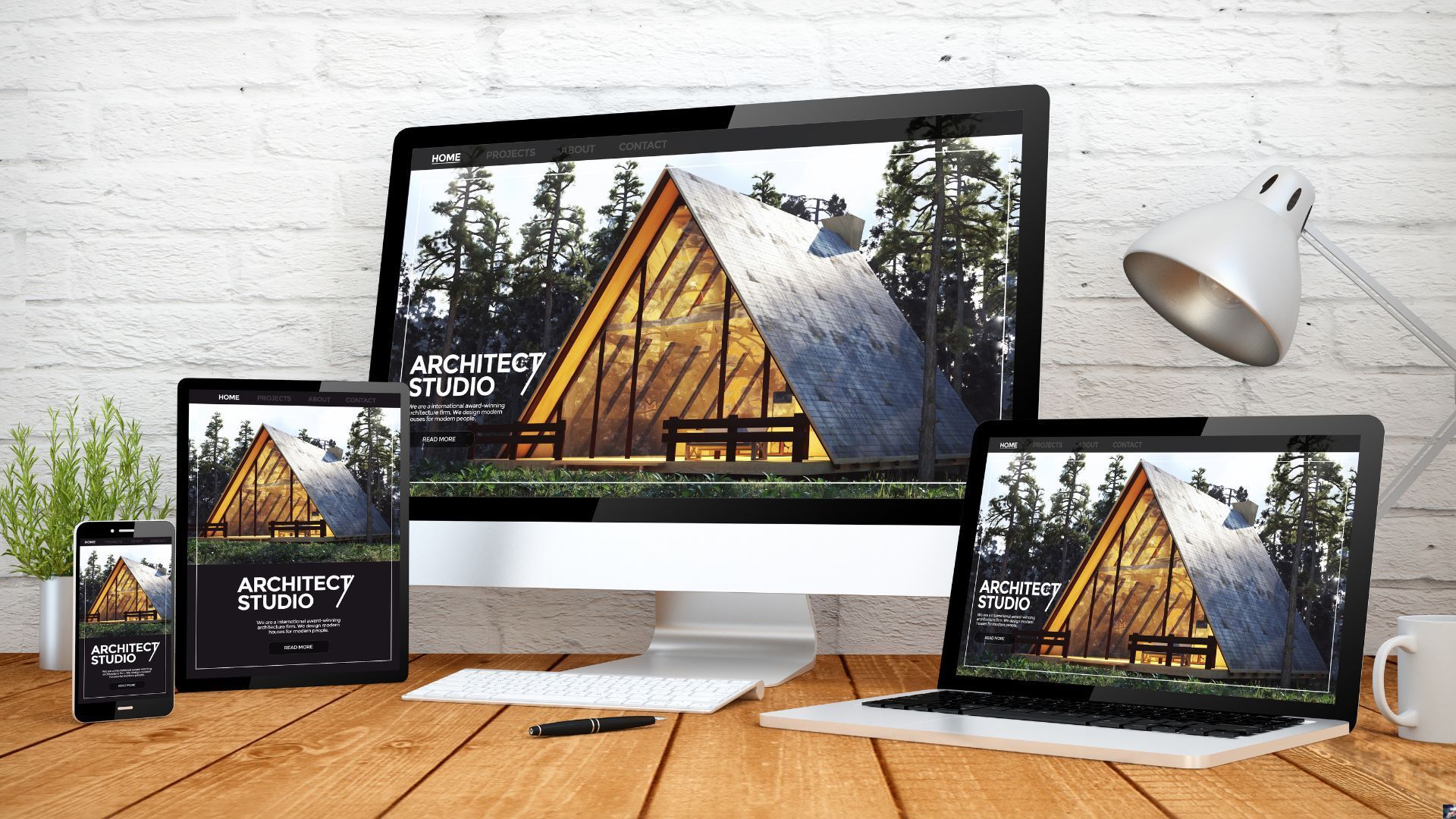Mastering Website Design: Unleashing Digital Creativity
Crafting Digital Experiences: The Essence of Website Design

Discover the pivotal role of website design in shaping online presence and user engagement. In the digital landscape of Denver, Colorado, John & Tanvir Pro Marketers illuminate the artistry and strategy behind effective website design. From intuitive navigation to captivating aesthetics, every element synergizes to captivate audiences and drive business goals. Explore how meticulous attention to detail, coupled with cutting-edge technology, transforms mere web pages into immersive digital journeys. Unveil the secrets of successful online ventures and harness the power of website design to elevate your brand in the digital realm.
Understanding the Importance of Website Design
In today's digital age, where online presence is paramount, the importance of website design cannot be overstated. A well-designed website serves as the virtual storefront for businesses, offering visitors their first glimpse into the brand's identity, values, and offerings. Beyond mere aesthetics,
website design influences how users perceive and interact with a brand, shaping their overall experience and decision-making process. From intuitive navigation to visually appealing layouts, every aspect of design plays a crucial role in capturing and retaining visitors' attention.
Furthermore, a professionally designed website instills trust and credibility in potential customers, signaling that the business is reputable and invested in providing a positive user experience. With competition fiercer than ever in the online marketplace, businesses that prioritize website design gain a competitive edge by differentiating themselves and establishing a strong online presence that resonates with their target audience. Ultimately, investing in effective website design is not just about creating a pretty interface; it's about crafting a digital experience that drives engagement, builds trust, and drives business growth.
The Fundamentals of Effective Website Design
Effective website design goes beyond mere aesthetics; it encompasses a comprehensive approach to creating digital experiences that resonate with users. At its core, effective website design prioritizes user experience (UX) and user interface (UI), ensuring that every aspect of the site is optimized for ease of use and engagement. This includes designing intuitive navigation menus, clear call-to-action buttons, and visually appealing layouts that guide users seamlessly through the site's content.
Moreover, effective website design embraces responsive design principles to ensure compatibility across various devices and screen sizes. With the increasing prevalence of mobile browsing, responsive design is essential for providing a consistent experience across platforms and maximizing reach. Additionally, effective website design prioritizes loading speed optimization, as slow-loading websites can lead to user frustration and high bounce rates. By focusing on these fundamentals, designers can create websites that not only look great but also function seamlessly, ultimately driving user engagement and conversion rates.
The Role of Visual Appeal in Website Design
Visual appeal is a cornerstone of effective website design, as it plays a pivotal role in capturing visitors' attention and conveying the brand's message. Aesthetically pleasing elements such as color schemes, typography, imagery, and multimedia content contribute to creating a memorable and immersive browsing experience. By strategically incorporating visual elements that align with the brand's identity and resonate with the target audience, designers can evoke desired emotions and create a lasting impression.
Furthermore, visual appeal goes hand in hand with usability, as a well-designed interface enhances navigation and encourages exploration. Clear and intuitive layouts guide users seamlessly through the site, while compelling visuals draw them in and encourage engagement. From striking hero images to interactive animations, every visual element serves a purpose in enhancing the overall user experience and communicating the brand's values and offerings effectively.
Navigating the User Experience Landscape
User experience (UX) design lies at the heart of effective website design, focusing on creating seamless and intuitive interactions that prioritize the needs and preferences of users. Central to UX design is the concept of usability, which encompasses elements such as navigation ease, content organization, and accessibility features. By understanding user behavior and preferences, designers can optimize the layout and functionality of a website to ensure a smooth and enjoyable browsing experience.
Moreover, UX design extends beyond the digital realm to encompass the emotional and psychological aspects of user interaction. By designing for delight, designers can create memorable experiences that leave a positive impression and foster long-term engagement and loyalty. Whether through microinteractions that add personality to the interface or personalized recommendations that anticipate user needs, thoughtful UX design enhances the overall quality of the user experience and sets websites apart from the competition.
Mobile Responsiveness: Designing for Every Device
In today's mobile-dominated landscape, ensuring that websites are responsive across various devices is imperative for reaching and engaging a diverse audience. Responsive design allows websites to adapt seamlessly to different screen sizes and resolutions, providing users with a consistent and optimized experience regardless of the device they use. By utilizing flexible grids and layouts, as well as fluid images and media queries, designers can create websites that look and function flawlessly on smartphones, tablets, laptops, and desktops.
Moreover, mobile responsiveness not only enhances user experience but also contributes to improved search engine rankings. With Google's mobile-first indexing prioritizing mobile-friendly websites in search results, responsive design is essential for maintaining visibility and driving organic traffic. By embracing mobile responsiveness as a core tenet of website design, businesses can ensure that their online presence remains accessible and engaging across the ever-expanding array of devices used by modern consumers.
Optimizing Website Performance for Speed and Accessibility
Optimizing website performance is essential for delivering a seamless and enjoyable browsing experience to users. Studies have shown that users are quick to abandon websites that take too long to load, making speed optimization a top priority for designers. By minimizing file sizes, leveraging browser caching, and optimizing code, designers can significantly reduce loading times and improve overall site performance.
In addition to speed, accessibility is another crucial aspect of website performance optimization. Ensuring that websites are accessible to users with disabilities, such as those using screen readers or assistive technologies, is not only a legal requirement but also a moral imperative. Designing with accessibility in mind involves implementing features such as alternative text for images, keyboard navigation support, and proper semantic markup. By prioritizing both speed and accessibility in website design, designers can create inclusive digital experiences that cater to a diverse audience and drive engagement and conversion.
Incorporating SEO Best Practices into Design
Search engine optimization (SEO) is integral to website design, as it determines a site's visibility in search engine results pages (SERPs) and influences organic traffic. By implementing SEO best practices from the outset, designers can enhance a website's discoverability and reach a broader audience. This involves optimizing on-page elements such as meta titles, descriptions, and headings with relevant keywords to improve search engine rankings and attract more organic traffic.
Furthermore, designing with SEO in mind involves creating a structure and hierarchy that search engine crawlers can easily navigate and index. This includes organizing content into logical categories, using descriptive URLs, and implementing schema markup to provide search engines with additional context about the content. By integrating these SEO strategies into the design process, designers can create websites that not only look great but also perform well in search engine rankings, driving sustained organic traffic and visibility for the brand.
Conclusion
Website design epitomizes the art of sculpting digital experiences. From Denver, Colorado to global markets, it shapes user interactions, defines brands, and amplifies businesses' online presence. The fusion of aesthetics and functionality in web design is paramount, ensuring seamless navigation and captivating visuals. Each pixel, color, and layout choice contributes to a cohesive narrative, inviting visitors into a curated journey. In conclusion, website design transcends mere aesthetics; it's a strategic tool for businesses like John & Tanvir Pro Marketers to captivate audiences and leave a lasting impression in the vast digital landscape.



PHONE
John
(970) 368-2810
BUSINESS HOURS
Mon - Fri: 08:00 AM - 06:00 PM
Sat - Sun: Closed
globalizedmarketingsolutions.com
Copyright © 2025 Globalized Marketing Soluitions All Rights Reserved.







